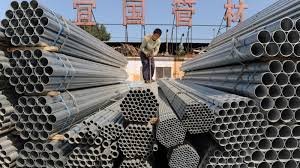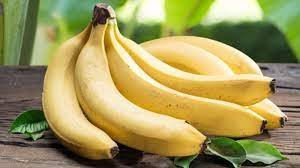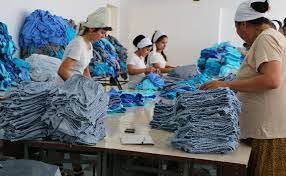(Indonesia) — East Java are known for many things: its bustling port, resilient spirit, and remarkable heritage of craftsmanship. But perhaps one of its most cherished legacies is the Behaestex Group, an unlikely industry leader that has managed to transform the humble sarong into a symbol of culture and global trade. What began as a modest textile business in the heart of Surabaya has grown into a powerhouse brand in the world of sarong manufacturing, exporting to countries around the globe and representing a piece of Indonesia’s rich culture.
The Behaestex Group story started in post-independence Indonesia when Surabaya was a thriving center of commerce and cultural exchange. In a small workshop, the founders of Behaestex saw an opportunity to revitalize traditional textiles, focusing on the sarong—a versatile garment embraced across Indonesia and beyond. These early sarongs were produced using simple machines and materials, but they quickly gained a reputation for quality and craftsmanship.
Established in 1953, PT Behaestex began as a weaving business known as “Pertenunan BHS” in Gresik, East Java. Initially, the company produced handwoven sarongs under the brand BHS, utilizing non-mechanical looms (ATBM) to craft its textiles. Over time, as demand grew, Behaestex expanded its production volume and eventually introduced machine-woven sarongs under a new brand, Atlas, to reach broader markets.
Najib Abdurrauf Bahasuan, the company’s CEO, noted that both BHS and Atlas sarongs maintain a high standard of quality. However, each brand targets different segments: BHS is marketed as a premium product aimed at the upper-middle class, while Atlas caters to the middle and lower markets, allowing Behaestex to appeal to a wide range of consumers. According to Najib, the brand’s products have become deeply embedded in Indonesian culture and are often regarded as prestigious items in certain regions.
Najib expressed pride in the company’s role in preserving Indonesian heritage, as Behaestex’s products contribute to sustaining the traditional art of sarong weaving, and the brand itself has become a cultural symbol across the archipelago.
As the company grew, Behaestex retained its focus on authenticity while exploring modern production methods. The goal was to combine heritage and innovation, creating sarongs that honored traditional designs yet could meet contemporary tastes and durability standards.
Navigating Economic Changes and Expanding Reach
Through the years, Behaestex faced the challenges of a rapidly evolving economic landscape. The company navigated the highs and lows of Indonesia’s shifting economy, especially during the Asian financial crisis of the late 1990s, which tested the resilience of even the most established businesses. However, Behaestex adapted by diversifying its product offerings and streamlining its manufacturing processes, which allowed it to remain competitive.
This resilience paid off as the company began to see opportunities for export. What started as a local garment quickly gained appeal across Southeast Asia, and from there, the reach expanded to the Middle East and Africa, where the sarong also held cultural significance. By understanding these foreign markets and tailoring its products accordingly, Behaestex Group steadily established a global presence.
In the modern era, Behaestex has managed to combine traditional craftsmanship with state-of-the-art textile technology. The company’s commitment to quality means it controls nearly every aspect of production, from weaving to dyeing to finishing. This integrated approach not only ensures high standards but also gives Behaestex a unique competitive edge in terms of cost efficiency and product consistency.
Behaestex’s expansion into high-tech production facilities has allowed the company to meet the demand for larger volumes while staying true to its roots. As a result, its sarongs are as popular in local markets as they are in export destinations, where they are sought after by consumers who value authenticity and quality.
Exporting Culture and Quality
Behaestex’s commitment to quality has positioned it as an ambassador for Indonesian textile culture on the global stage. In markets like Malaysia, Brunei, the United Arab Emirates, and parts of Africa, Behaestex sarongs have become symbols of cultural pride, prized for their designs and durability. The company is not just exporting fabric but is effectively sharing a piece of Indonesian heritage and artistry with the world.
The group’s marketing approach plays an essential role in its success abroad. Recognizing the varying styles and cultural significance of sarongs in different regions, Behaestex offers customized designs to cater to regional preferences. By engaging with local distributors and understanding the nuances of each market, Behaestex has not only secured its position as a leading exporter but also built long-lasting relationships with its customers around the world.
In recent years, Behaestex has also made strides in sustainability, aligning itself with global shifts towards eco-friendly production. The company has invested in sustainable dyeing practices and responsible sourcing of raw materials, ensuring that its production processes do not harm the environment. Behaestex is also active in community outreach, supporting local artisans and small-scale producers to preserve traditional Indonesian textile techniques.
From a modest workshop in Gresik to the far reaches of the international market, Behaestex Group has crafted a success story woven as tightly as the threads of its sarongs. It’s a legacy of resilience, innovation, and cultural pride—a company that not only weathered the storms of Indonesia’s economic past but also thrived through adaptation and a deep respect for tradition.

























































